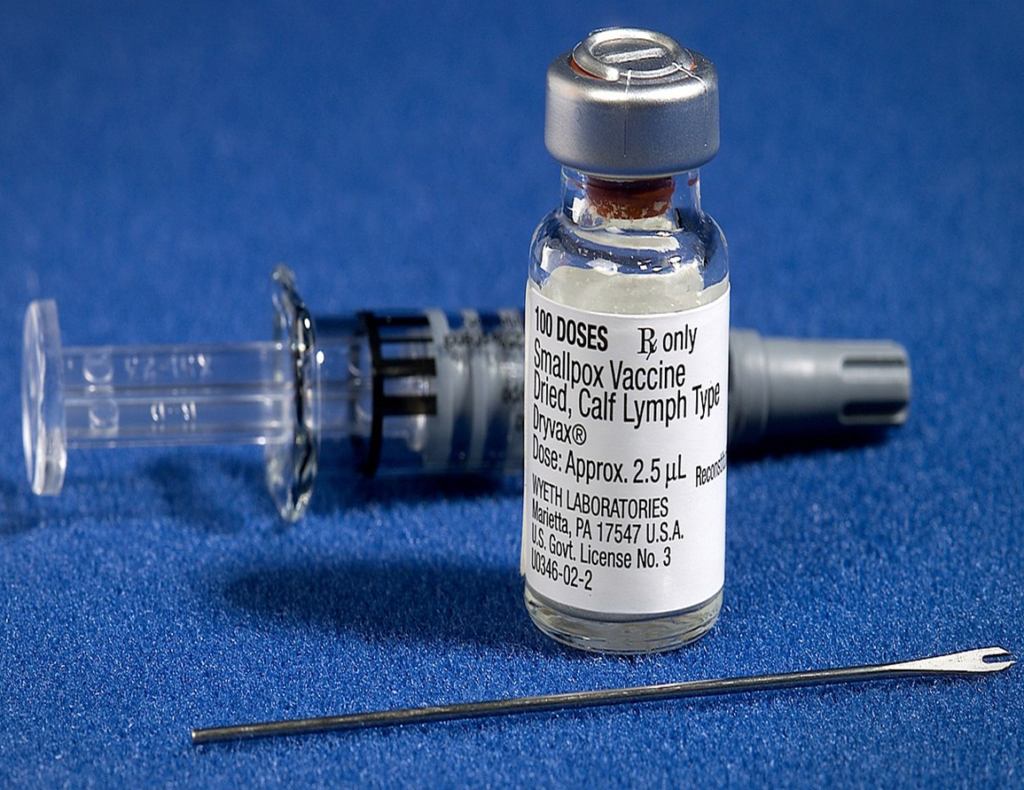
I learned this today. Smallpox was responsible for as many as 500 million deaths in the 20th century, but it was completely eradicated by December 1979.
Smallpox is a disease caused by four orthopoxviruses. They are variola, vaccinia, cowpox, and monkeypox. Variola only infects humans while the other viruses can infect other animals as well. It is transmitted through the inhalation of airborne droplets from an infected person. It could also be transmitted through infected clothes or bedding.
It was named smallpox to differentiate it from syphilis, which was known as the great pox.
When infected, a person would get symptoms very similar to the flu. About two weeks into the infection, lesions appeared on the mouth, tongue, palate, and throat. When they burst, they released large amounts of the virus into saliva, aiding their transmission. Shortly after this, within about three days, lesions spread all over the skin. In Europe in the 18th century, between 20 and 60% of infected people died, with 80% of children dying. It was responsible for a third of all known cases of blindness. 400,000 people died of it a year. If you survived the infection, you would have a lifelong immunity.
There is no way of knowing when smallpox started. By looking at the rate at which it mutates, experts have estimated that it probably evolved from an African rodent virus between 68,000 and 16,000 years ago.
The first known cases of smallpox have been found on Egyptian mummies that died over 3,000 years ago. It is estimated that it began in Africa, and it would have been carried around the world by trade and conquest.
In the 16th and 17th centuries, Europeans carried it to the Americas and Australia. The indigenous populations there had no immunity to smallpox, and it decimated their populations. Some experts believe that the colonists introduced smallpox infected blankets on purpose, but I don’t know if that is true.
In Africa, India, and China, a way of combatting smallpox called inoculation was developed. Inoculation comes from the Latin inoculare, which means “to graft”. A small amount of matter from a lesion on an infected person was inserted into a small cut in the skin. When the virus enters the body this way, it caused a much milder and more localized infection than when the virus was inhaled. However, more importantly, it gave the recipient immunity from the virus. It is enough of the virus to stimulate the immune system into producing specific immunity, but not so much of the virus that these new antibodies can’t kill it.
By 1716, Lady Mary Wortley Montagu brought the knowledge back to England from Istanbul and had her own 4-year-old daughter inoculated. The practice slowly spread around Europe, but far more slowly than it should have. People were afraid of what they didn’t understand and thought they would get smallpox. France actually banned inoculation and thousands of people died needlessly.
Inoculation (or variolation as it was called) against smallpox was safe in 97% of cases. That meant that some people died of the inoculation, but far fewer than would have died from smallpox.
In the dairy community in England in the 1700s, it was well known that milkmaids and other workers who caught cowpox were immune to smallpox. Cowpox is a far less deadly virus to humans. In 1774, with a smallpox epidemic brewing, a farmer in England called Benjamin Jesty, decided to infect his wife and children with cowpox. They got sick, got better, and were immune from smallpox.
Twenty years later, in 1796, Edward Jenner performed the same process. He published his data and called the process vaccination, after the Latin for cowpox: vaccina.
Vaccination slowly began to grow in popularity, but Jenner had to fight most of his life against people who didn’t understand or believe what he was doing. Slowly, the evidence began to speak for itself. 30% of people with smallpox died. 3% of people inoculated with smallpox died. 0.000198% of people vaccinated with cowpox died.
Vaccination gained momentum. By 1860, most developed countries had carried out systematic vaccination programs and virtually eliminated smallpox. The virus spreads by injecting itself into saliva and then making the victim cough. If someone has been vaccinated, their body will kill the virus before it can be transmitted, effectively eradicating smallpox.
However, there were still a large number of smallpox deaths in the developing world. In the 1950s, there were 50 million smallpox cases. The World Health Organization had the goal of eradicating smallpox worldwide in 1950. They started vaccination programs in poorer countries.
If there was a smallpox outbreak, the area would be quarantined and there would be mass vaccination until the virus was gone.
By 1975, the only smallpox left in the world was in Somalia and Ethiopia. An intense international vaccination program was initiated and the last smallpox virus on Earth was declared eradicated on 9 December 1979. A virus that had been with humans for possibly 68,000 years and that had killed close to a billion people was gone.
Despite all of this success, there are two stores of live smallpox left in the world. One is in Russia’s State Research Center of Virology and the other is in the US Center for Disease Control and Prevention in Atlanta. Why? Your guess is as good as mine. And this is what I learned today.
Photo By Photo Credit: James Gathany- https://commons.wikimedia.org/w/index.php?curid=113650021
Sources
https://www.cdc.gov/smallpox/index.html
https://www.cdc.gov/smallpox/history/history.html
https://en.wikipedia.org/wiki/Smallpox
https://www.who.int/news-room/questions-and-answers/item/smallpox
https://en.wikipedia.org/wiki/History_of_smallpoxhttps://www.ncbi.nlm.nih.gov/pmc/articles/PMC1200696/
